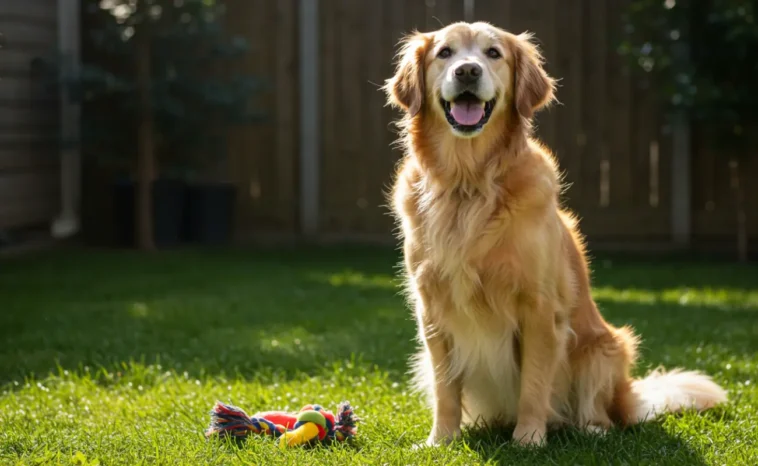Hey there, fellow dog lovers! Ever heard the saying, “You can’t teach an old dog new tricks”? Let me assure you, that’s just a misconception! As an experienced dog trainer, I’ve had the pleasure of working with dogs of all ages and debunking this common belief. In this article, we’ll explore the world of training methods for our furry friends, focusing on the idea that age is just a number when it comes to learning new tricks.
The Myth of Age-Related Learning Limitations
Breaking Down the Myth
First things first, let’s tackle the myth that older dogs can’t learn. Trust me, it’s nothing but a misconception. Dogs, just like humans, have a remarkable ability to adapt and learn throughout their lives. I vividly remember working with Max, a wise old Labrador, who surprised everyone by mastering the art of fetching a frisbee in his golden years.
Adapting to New Training Methods
It’s all about finding the right approach. Older dogs may have established habits, but that doesn’t mean they can’t embrace new tricks. Introducing them to innovative training methods gradually and with patience is key. Take my friend Sarah’s senior Poodle, Daisy, for example. Through consistent training using positive reinforcement, Daisy not only learned new tricks but also became more active and engaged.
Understanding the Importance of Training
Well-being and Beyond
Training isn’t just about performing tricks; it significantly contributes to a dog’s overall well-being. Think of it as mental exercise for your furry companion. Just like us, they enjoy the mental stimulation and the sense of accomplishment that comes with learning something new. My own dog, Charlie, thrived on the challenge of learning new commands, and I noticed a positive change in his behavior and happiness.
Benefits of Continued Learning
The benefits of training extend beyond the immediate joy of mastering a trick. It builds a stronger bond between you and your dog, enhances communication, and can even address behavioral issues. I’ll never forget helping a family whose older rescue dog, Buddy, had anxiety. Through training, we not only alleviated his anxiety but also strengthened the family’s connection with him.
Innovative Training Approaches
The Power of Positive Reinforcement
One of the most effective training methods I’ve come across is positive reinforcement. Dogs respond exceptionally well to rewards and praise. When I introduced this technique to a group of older dogs at the local shelter, the transformations were astounding. Treats and enthusiastic praise became powerful motivators, proving that it’s never too late for a dog to associate good behavior with positive outcomes.
Tailoring Training Plans
Every dog is unique, and that’s something we, as trainers, must recognize. Tailoring training plans to suit individual needs and learning styles ensures better results. When working with my friend Mark’s older Beagle, Bella, I realized she responded best to short, focused sessions. Adjusting the training approach made a world of difference, and Bella quickly caught on to new commands.
The Role of the Pet Dog Owner
It’s a Team Effort
While I may have the expertise, the real magic happens when pet owners actively participate in the training process. Consistency is key. Think of it as a team effort between you and your dog. My neighbor, Janet, struggled initially with training her senior Shih Tzu, Rocky. Once she embraced a consistent routine and involved Rocky in short daily sessions, the progress was remarkable.
Building a Strong Bond
Training isn’t just about commands; it’s about building a strong bond with your furry friend. Spending quality time together, understanding their cues, and celebrating their successes create a deeper connection. I’ve seen firsthand how the bond between a pet and their owner can flourish through the shared experience of learning and growing together.
Success Stories
Real-Life Transformations
Let’s dive into some heartwarming success stories. Remember Sam, the skeptical owner of a ten-year-old Cocker Spaniel named Rusty? Sam believed Rusty was too old to learn anything new. Fast forward a few weeks, and Rusty not only learned to shake hands but also mastered weaving through poles in the backyard agility course. Sam was amazed at the transformation.
Pet Owner Testimonials
I reached out to fellow pet owners who embraced innovative training methods. Sarah, Daisy’s owner, shared, “Positive reinforcement changed the game for Daisy. She became more confident, and our connection deepened.” These testimonials underline the impact of personalized training plans and the importance of debunking age-related learning myths.
Overcoming Challenges
Addressing Common Hurdles
It’s essential to acknowledge that training older dogs comes with its challenges. Some may be set in their ways, while others might have physical limitations. The key is to adapt your approach accordingly. When working with a senior Boxer named Tyson, I encountered resistance initially. By adjusting the pace and incorporating more interactive play, Tyson eventually embraced the learning process.
Persistence Pays Off
Patience is your best friend in dog training. It’s normal to face setbacks, but the key is to remain patient and consistent. Remember Charlie, my own dog? He wasn’t the quickest learner, but with time and persistence, he surprised us all with his newfound skills. The journey is as crucial as the destination, making the process of training an old pet dog all the more rewarding.
To Sum It Up
age is no barrier when it comes to teaching an old dog new tricks. Training is a lifelong journey that enhances your dog’s well-being and strengthens your bond. Embrace innovative methods, involve yourself actively, and be patient. The joy of seeing your senior companion thrive and enjoy the learning process is a reward in itself. So, go ahead, challenge those old notions, and let the training adventures begin! Your dog will thank you with a wagging tail and a heart full of love.




